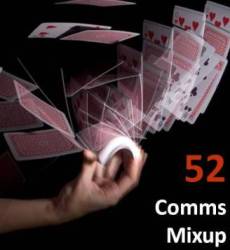See this clone trooper? He'll be coming out of your keyboard next if you don't get these 3 Facebook principles down. No really. He will. (Image credit: myfbcovers.com)
EdgeRank. Leads. News feed. EdgeRank. Leads. News feed. Say it with me. Edge Rank. Leads. News feed.
Facebook is growing and evolving like crazy, so these three principles will undoubtedly grow and evolve along with it. But for now, these are three areas every communicator working in Facebook – and that should be every one of you – must have a handle on when it comes to explaining the value the leading social network can provide to your brand. Here is a bit more on each of these principles and a supporting blog post that provides a deeper dive.
EdgeRank
AllFacebook.com ran a story earlier this month that noted the average Facebook page only reaches 17 percent of a brands’ fans. 17 percent! That means more than 80 percent of the fans who like your page never see any of the content you’re posting. Scary huh? Makes those likes seem, well, kind of worthless.
If you didn’t already know, EdgeRank is basically Facebook’s algorithm that decides what posts you see when you go to your news feed. Remember, one of the main results of the changes Facebook announced at F8 is that we were going to see fewer, more customized posts in our Facebook news feeds. Part of the way EdgeRank is selecting those posts is based on overall interaction with updates from the brand – likes and comments. Brian Carter digs into the EdgeRank effect more here.
Key takeaway: Likes of your brand on Facebook mean very little if your fans never see your posts. The more engagement – likes and comments – with your posts, the better chance they show up in your fans’ news feeds. And people are more likely to interact with content from brands/people who post consistently and share content that invites interaction, such as questions, pictures, video, etc.
Leads
One of the toughest parts about all social media, even Facebook, is convincing leadership it can be connected to business objectives. To make the connection, don’t look at Facebook in a box, where the key metrics become likes and interactions. Instead, see it as one piece of your overall communications approach, all of which should be working together to get the customer to do what you want him/her to do – e.g. buy stuff, have a second offline conversation (lead generation) or provide feedback.
The comic in Adam Singer’s post here really sums the issue up nicely. It addition, he provides smart insights like this one: “So all we can do is continue to say what most digital marketers ignore: that the web is more than Facebook and Twitter, and that the reasons to self-publish continue to significantly outweigh the losses of yielding your presence to the stream.”
Key takeaway: Many see Facebook as the more social and personal of the social networks. But it can absolutely be used to generate leads. Think about how you can convert the fans you meet on Facebook to customers performing the calls to action we mentioned above. Or can you start a relationship with fans on Facebook that leads to them signing up for your email newsletter or blog, which leads to an offline conversation and then potentially a sale?
News feed
This is an oldie but a goodie, especially with the supporting information coming from Brian’s and Adam’s posts along with what we heard from Buddy Media’s Facebook study last week. Most Facebook users spend the majority of their Facebook time in the news feed. Not on brand pages, custom tabs or apps. In fact, with status updates, ads and sponsored stories, it’s super-easy for me to like your brand without ever going to its Facebook page.
One of my all-time go-to blog posts is this one by Jay Baer. There’s a lot of goodness about Facebook use here, but this part continually stands out to me: “The fact is that in almost every case, the one and only time your fans visit your Facebook page is when they initially “like” the page. After that, all touch points between the brand and the fan are conducted in the Facebook News Feed.”
Key takeaway: Developing a consistent approach to Facebook content and engagement is not sexy. An editorial calendar doesn’t have the flash of a custom tab or the sizzle of an app. But consistent content shared as status updates is what keeps your brand top of mind with consumers. Not flash and sizzle.






[...] Posted on February 7, 2012 by Fleishman-Hillard Digital specialist Justin Goldsborough looks at three Facebook principles communicators must have a handle on, including an approach that’s “not sexy” but beats the [...]